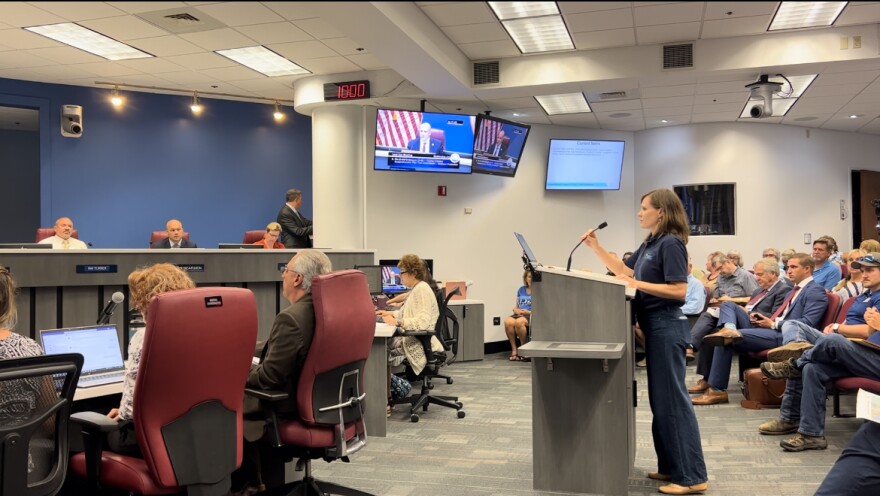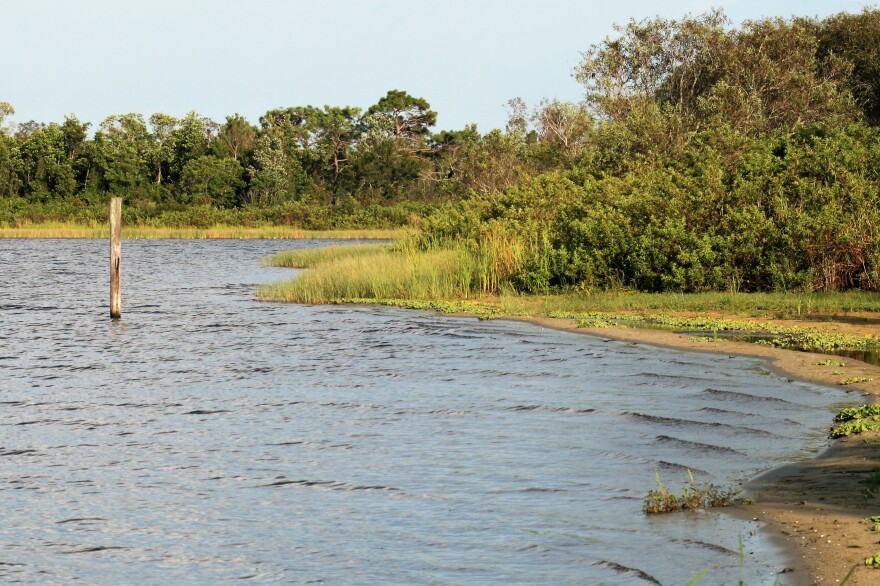Changes to Manatee County’s Comprehensive Plan and Land Development Code would roll back the size of wetland buffers, allowing developers to build closer to the protected areas.
At a commission meeting Thursday, dozens of citizens implored commissioners to keep the current 30- and 50-foot buffers.
Manatee County resident Mark Vanderee, a retired engineer, warned about the impacts of reducing them.
"In 2012, Hurricane Sandy ripped up the East Coast," Vanderee said. “People up there had a wakeup call. They destroyed their wetlands. They're spending hundreds of millions of dollars on wetland restoration. You remember the old saying — an ounce of prevention is worth a pound of cure? Our ounce of prevention is our 50- and 30-foot buffers."
At Thursday’s meeting, Daniel DeLisi, a land-use attorney hired by the county as a consultant, said Manatee’s current wetland regulations are “redundant.”
“Right now, in Manatee County, you have an increased wetland buffer. But if your goal is water quality, that’s probably not your most effective means of providing for water quality benefits,” DeLisi said.
Balancing property rights and the environment
DeLisi is the same consultant who previously worked for local developer Carlos Beruff in a pair of legal challenges to Manatee County over its current wetland regulations. Judges ruled in favor of the county.
During debate, Commission Chair Kevin Van Ostenbridge argued that current rules infringe on the rights of land owners.
"We all have the same intentions, right? We all want clean water,” Van Ostenbridge said. “We all want to protect our environment. At the same time, we also have to protect private property rights, which are part of the foundation of this country."
District 7 Commissioner George Kruse, the board’s lone dissenter, disagreed with that premise.
"We're not really actually taking anything,” Kruse said. “These laws and regulations have been in place well predating a vast majority of the acquisitions of these big parcels of land. When they acquired that land, these buffers were already in place. They knew what the requirements were."

After the vote, the environmental group Suncoast Waterkeeper, which lobbied against the changes, released a statement.
“To say we are disappointed is a gross understatement,” it read. “We are not done with this fight and we know we're not alone."
During testimony, Abbey Tyrna, the group's executive director, said a buffer minimum of at least 50 feet is needed to effectively reduce nitrogen pollution in waterways.
"That's really important because we want to remove nitrogen. We don't want harmful algal blooms," Tyrna said.
The state now needs to approve the proposed changes to Manatee's comprehensive plan.
A second public hearing is scheduled for October.




